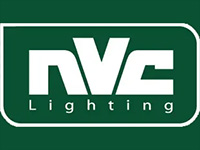Take A Leap Of Faith

By Aaron Oddy, Sales Engineer at Centiel UK.
Uninterruptible Power Supplies (UPS) protect critical loads from the effects of power outages or interruptions. However, nothing is ever 100% risk free and every site is unique with its own requirements. Therefore, it is essential that clients understand the risks surrounding the purchase, installation and maintenance of UPS systems, and are comfortable with those risks in order to take a ‘leap of faith’ that the UPS will perform as expected when the time comes.
It’s a bit like crossing a road. Careful planning can mitigate risk to ensure as safe a transition as possible from one side to the other, just like with a new UPS installation.
Equipment
 Using the highest quality equipment will reduce the risk of failure. Think of it like those designer trainers or sturdy, reliable walking boots needed to get you across the road safely! From a UPS perspective, higher quality components last longer and reduce the mean-time-before-failure, increasing the systems availability.
Using the highest quality equipment will reduce the risk of failure. Think of it like those designer trainers or sturdy, reliable walking boots needed to get you across the road safely! From a UPS perspective, higher quality components last longer and reduce the mean-time-before-failure, increasing the systems availability.
Quality equipment can cost more but that is because manufacturers invest heavily into research and development to ensure that the components selected for use in their products meet a strict set of performance standards. This means that they can deliver the most robust and reliable systems. Ultimately, the aim of any quality UPS manufacturer is to produce a system that has the highest availability, highest levels of efficiency with reduced running costs and minimised risk of system downtime.
Further, a UPS is only as good as its batteries and associated infrastructure. Therefore, it is important to purchase good quality batteries which are also properly maintained, tested regularly, and replaced as necessary so they are ready to support the load in the event of a mains power failure.
Resilience
Understanding the level of resilience required is important and this can be different for each client. Is a single UPS supporting a single critical power path to the load (N) enough? Or does the client need a higher level of resilience?
Moving to an N+1 level of redundancy where N = the quantity of UPS required to support the load and “+1” = the value associated to redundancy will increase the resilience. However, there is still only one critical power path to the load and although this configuration is an improvement from N there is still a single point of failure.
To remove any single points of failure a minimum of 2N (N+N) must be adopted. 2N ensures two independent critical power paths (A & B) supported by their own UPS. Not only has the resilience increased but now each power path is concurrently maintainable, meaning that at least one path is always available to support the critical load.
To enhance the resilience further you can have redundancy on both critical paths (2N+1). This concept provides a fault tolerant configuration resulting in a fully concurrent maintainable system and the highest level of availability.
Asking the question “how much battery autonomy is required?” may not be enough. Will the batteries provide sufficient backup power to perform a graceful shut down or for the generator to take over (if available), or does the site need a much longer autonomy? Understanding the sites procedures for power outages and maintenance will help to determine the required autonomy and battery configuration.
In some smaller applications a single string may be suitable, however, in the most critical of applications a minimum of two strings is preferred. Paralleling multiple strings of batteries to deliver the required autonomy adds redundancy at battery level and increases resilience further. True modular UPS systems with distributed architecture also enable batteries to be configured with a separate battery set per UPS module. Not only do you have N+1 on your UPS you also have N+1 on your battery.
Maintenance
 Often overlooked, the importance of preventative maintenance of a UPS and associated equipment keeps the solution in optimal condition and ready to perform when required. Otherwise, it’s a bit like failing to tie your shoelaces on those designer trainers before attempting the road crossing!
Often overlooked, the importance of preventative maintenance of a UPS and associated equipment keeps the solution in optimal condition and ready to perform when required. Otherwise, it’s a bit like failing to tie your shoelaces on those designer trainers before attempting the road crossing!
Inevitably as equipment ages, components become less reliable and available, and the risk of failure is increased. However, we regularly come across UPS systems that have significantly exceeded their recommended design life and should have been replaced years ago. By continuing to run and maintain an aging UPS, clients are putting their trust in a system with a much higher probability of failure.
Timing of remedial work is important to mitigate risk to the load too. Some sites with an N configuration ask for visual checks rather than switching to external bypass which would temporarily put the load at risk while on raw mains. What if there is a mains failure while the system is on bypass? However, visual checks alone also carry a risk as the system has not been maintained in accordance with the manufacturers guidelines. One solution is to collaborate with the client to test or undertake remedial work at a planned time – for example out of working hours to minimise the impact of any downtime.
A further challenge we come across is that sometimes, maintenance providers will take on a contract that they are unable to support fully. As well as invalidating warranties, essential software updates will be missed which can impact the UPS’ functionality. The consequence of using unqualified engineers can be serious. For example, putting a UPS into bypass for maintenance using an incorrect switching sequence, can introduce a fault into the system causing technical problems and risking the load. Trained maintenance engineers will monitor and address any issues and take corrective action where necessary to mitigate risk.
Planning
 Careful planning always comes into its own. Correct assessment and working with experts who can offer solutions such as a temporary UPS or out of hours remedials can reduce the risk. Here, communication with all parties is essential, including consultants, end-users, engineers and suppliers. If everyone understands the process, it means there is less likelihood anyone will trip over as they cross the road.
Careful planning always comes into its own. Correct assessment and working with experts who can offer solutions such as a temporary UPS or out of hours remedials can reduce the risk. Here, communication with all parties is essential, including consultants, end-users, engineers and suppliers. If everyone understands the process, it means there is less likelihood anyone will trip over as they cross the road.
The planning process also shouldn’t be rushed. A calm, calculated approach should be adopted. This means there is time to attend to all the details and ensure the client is comfortable with the level of risk. If not, it’s time to implement further measures to ensure they are comfortable before moving ahead with remedials or a new installation.
A UPS will protect the critical load of any facility for many years. However, there is always a risk to the load. For clients it’s about fully understanding that risk and being completely comfortable and accepting the level of mitigation strategies employed in risk reduction. It would be impractical to remove all cars from the roads every time we wanted to cross! However, by using the best equipment (suitable footwear) and making sure it is maintained correctly (do those shoelaces up!) we are more likely to make a successful crossing.
For further information about Centiel’s full range of
UPS solutions and our world-class support services please see: www.centiel.co.uk
Click the article to enlarge it.























































